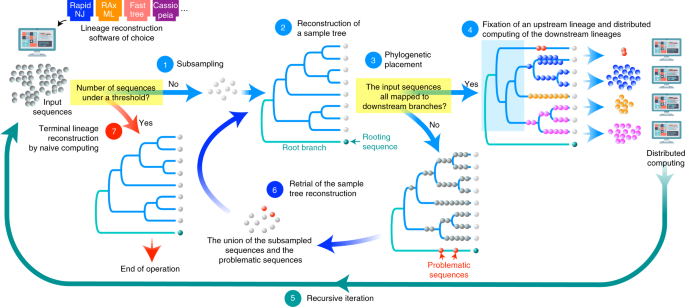A week ago hardly anybody had heard of social media app Bluesky, but then seemingly overnight it exploded to more than 50,000 users. As with the likes of Mastodon and Hive before it, Bluesky was being heralded as the new Twitter; a place people could go to escape the smothering blanket of blue tick sagas, hate speech, politics and Elon Musk’s algorithmically recommended posts.
But before you go leaping for your phone to download this social saviour of an app, the most important thing to know right now is that it’s not going to let you in. In an attempt to keep growth organic, Bluesky is invite-only; users get one invite to give out every two weeks.

Bluesky is available on app stores, but you need an invitation to get in.
This may sound like a huge hurdle, but it’s also a major part of Bluesky’s current appeal. There’s a grass-is-always-greener effect combined with the lure of exclusivity and good old-fashioned FOMO that just makes the service seem cool.
Not to mention the fact that many of the screenshots making their way from Bluesky to Twitter carry the promise of some of that early web culture energy, where people are being weird and funny for the sake of it rather than for clout, and few users are being mean or incendiary. The problem for Bluesky will be nurturing and cementing that culture in such a way that it persists, even when the floodgates open and millions of users pile in.
Indeed, some of the most interesting things that appear to have happened on Bluesky thus far have happened in part because the platform is so new. A proposed AI solution for blocking nudity is apparently not working as yet, so unclothed people are still common. Controversial pundit Matt Yglesias was subjected to a mass pile-on of harassment, including someone (jokingly?) threatening to beat him with hammers, but the ability to block people had not yet been implemented. And some cheeky makers of bot accounts created a thread so immense it would break the site for anyone who interacted with it.
Loading
Bluesky chief executive Jay Graber has endeared herself to the app’s community by being transparent (and occasionally playful) in dealing with these issues and others. In a post warning of the dangerously long string of replies, she said the team had dubbed this issue “the hellthread”, and that users should try to ignore it until a fix was devised. She also (unsuccessfully) begged users to stop referring to posts as “skeets”, which is a portmanteau of “sky” and “tweets” but also sounds unfortunately vulgar.
Major Twitter personalities including Dril have appeared at Bluesky, as have politicians, journalists and assorted celebrities. But in general it seems like Twitter; largely anonymous people enjoying spontaneous conversations.
Bluesky’s similarities to Twitter should not be surprising, since the company was actually spun out from Twitter. In 2019, Twitter founder (and then CEO) Jack Dorsey funded a team of five to research a decentralised standard that would eventually replace Twitter. At the time — as expressed in a surprisingly prophetic thread — Dorsey was worried about centralisation driving a culture of outrage, and the propsect that Twitter could become privately owned and abused.
Though Bluesky has always been an independent company, Twitter stopped funding it under new owner Elon Musk in late 2022, and in February this year it began operating as a social platform with a few hundred users (Dorsey remains on its board).
So, will Bluesky fulfil its purpose by dethroning Twitter? Possibly, but it’s complicated. Because Bluesky is building a decentralised platform, its app is really only designed to be a showcase of the kind of social media platforms that could be built in the future.
The idea is that social media should be more like email or phone numbers, with companies providing the infrastructure but users largely in control of how it’s used. The main thing Bluesky is building is the beginning of that infrastructure, which it calls the AT Protocol. In theory, there could be many apps like Bluesky in the future, but you would own your identity and be free to use any of them without having to lose all your friends and data to start again.
Loading
The company has proposed a number of features that could work together with this federated open-source structure to make social media platforms that are quite different to the likes of Twitter. For example, Bluesky’s leadership wants to establish a “marketplace” for algorithmsrather than operating one master algorithm that decides what to show. Each user would be able to choose whichever algorithm they wanted to apply to their own feeds.
Then there’s something they call “composable moderation”which will be a system of community-defined content controls. Any person will be able to create and apply labels to any post, as will admins, moderators, bots or algorithms. Then services or users can use those to eliminate content from their feed or shape what content they see. It’s an ambitious approach that throws up a lot of immediate questions (couldn’t people easily weaponise or sabotage labels?), but it’s still in the early stages.
Hypothetically, because of the federated approach, you’ll be able to seamlessly move to a different service if you don’t like how the admins are handling moderation. As for right now on the Bluesky platform, the leadership plans to use an AI first pass to tag or block content, and also operate a “default” list of filters for showing, hiding and blocking content that users can tweak.
The original plan was that Bluesky would research and develop all of this tech, and then Twitter would transition to becoming just one of many services built upon it. That’s certainly not going to happen now, but it’s feasible that Bluesky and other services built on the AT Protocol could provide a viable alternative.
Get news and reviews on technology, gadgets and gaming in our Technology newsletter every Friday. Sign up here.
Most Viewed in Technology
Loading
Note: This article have been indexed to our site. We do not claim legitimacy, ownership or copyright of any of the content above. To see the article at original source Click Here













